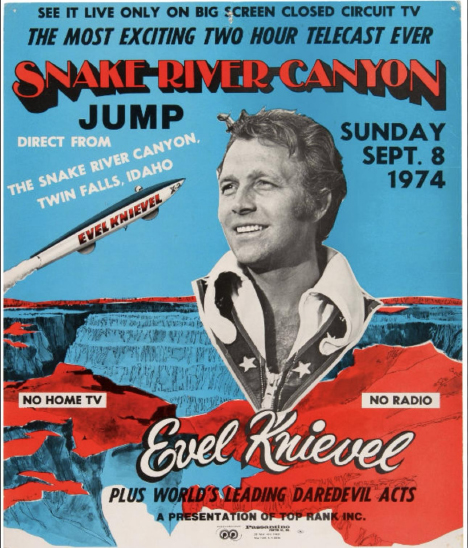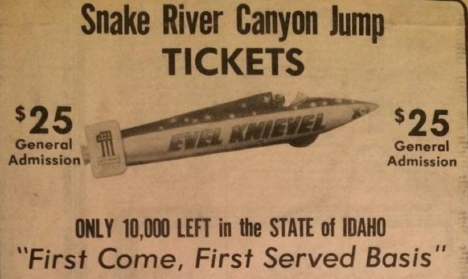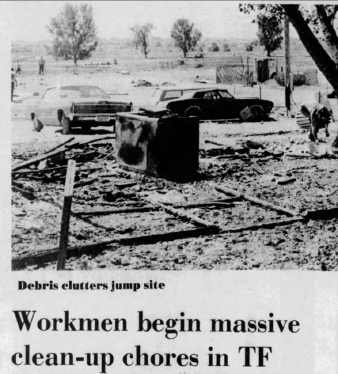Evel Knievel, a Sky Cycle, and a Rowdy Crowd
Evel Knievel was an American motorcyclist “daredevil” and entertainer. He began using his motorcycle to jump cars, buses, and other obstacles in the early 1960s. He gained fame on December 31, 1967, by successfully jumping the Caesar’s Palace Fountains and then crashing upon landing. ABC Sports covered the event, making Evel Knievel a household name in the early 1970s.

Evel always looked for new ways to promote his exploits. In 1974, he leased 300 acres of land on either side of the Snake River Canyon near Twin Falls, Idaho. He hired an aeronautical engineer to design a rocket-powered cycle to jump the canyon. After several months of promotion, design, and practice, the “Snake River Canyon Jump” was announced to take place on September 8, 1974, with a paid live audience of some 33,000 and a “big screen closed circuit TV audience” in the millions.

Portable restrooms were paid for and made for this event. Some 200 wooden restrooms were constructed by local entrepreneur O.K. Swenson. Roughly 100 were placed on either side of the canyon—some ½ mile apart. With no bridge and no major roads for transport of the units, many miles were driven to set these units up on opposite sides of the canyon.
On the day of the event, according to news reports, a “rowdy crowd” assembled for Evel Knievel’s jump. Upon takeoff, a parachute prematurely deployed and although the “sky cycle” made it to the other rim, the prevailing winds caught the deployed parachute and the craft drifted back and then down to the bottom of the canyon.
Apparently, the crowds became “riotous” and began to destroy and burn property—including quite a few of the wooden portable restrooms.

A lawsuit was filed against Evel Knievel, which was ultimately settled in 1979.

A retrospective article in the Times-News (Twin Falls, Idaho) on August 29, 1999, stated:
“Outside of a few, such as O.K. Swenson, who supplied—and insured—the 200 wooden (read: flammable) outhouses, just about everyone who hoped to make a fortune on the event ended up in the red.”
Was this, perhaps, the origin of our industry initiating the damage waiver?
For even more interesting facts about the history of our industry and our Association, click on the link below to order your History Book today. All proceeds benefit the PSAI Scholarship Fund.
